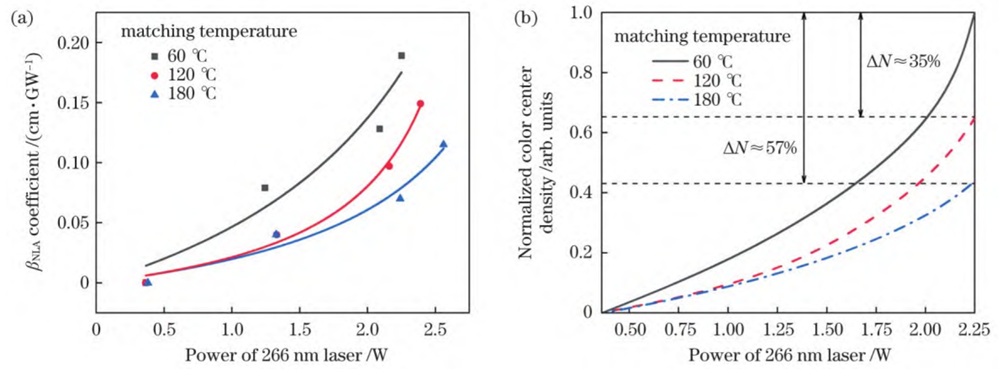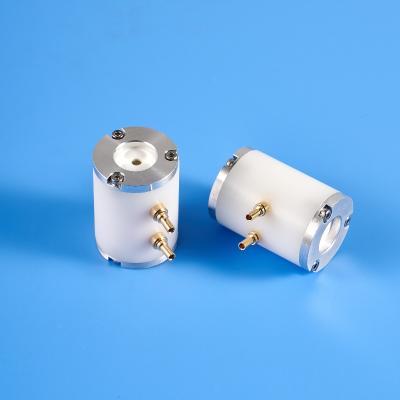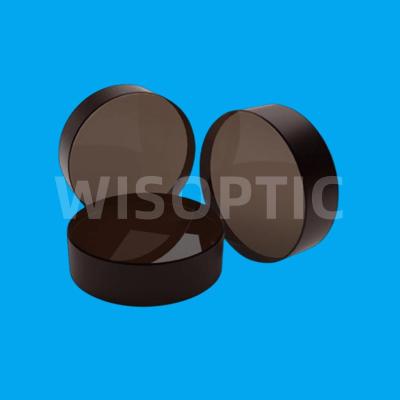Study on thermal characteristics of 266 nm deep ultraviolet laser generated by BBO crystal - 06
04 Theoretical study of thermal properties
As can be seen from Figure 5 (a), when the BBO crystal (www.wisoptic.com) matching temperature is 60 ℃, as the 266 nm deep ultraviolet laser power gradually increases from 0.32 W to 1.24 W, 2.09 W and 2.25 W, the fitted nonlinear absorption coefficient βNLA also increases continuously, from 0 to 0.079, 0.128, and 0.189 cm/GW, respectively. However, the nonlinear absorption coefficient decreases with the increase of the crystal matching temperature, especially when the crystal matching temperature is 180 ℃ and the 266 nm laser power is 2.25 W, the nonlinear absorption coefficient βNLA is only 0.07 cm/GW. At the same time, Figure 5 (b) shows that the higher the 266 nm laser power, the greater the difference in color center density generated by crystals with different matching temperatures. When the 266 nm laser power is 2.25 W, the internal color center density of the crystals with matching temperatures of 120 ℃ and 180 ℃ is reduced by nearly 35% and 57% respectively compared with 60 ℃. The results of this study show that increasing the crystal matching temperature during the frequency quadrupling process can reduce the nonlinear absorption coefficient of the crystal and the color center density, reduce the heat generation inside the crystal, and thus improve the deep ultraviolet laser power output, which verifies the experimental results of this paper.
Fig. 5 (a) Nonlinear absorption coefficient βNLA and (b) normalized color center density varies with the power of 266 nm DUV laser at different phase matching temperatures
05 Conclusion
This paper builds an experimental device for generating 266 nm deep ultraviolet laser by quadrupling 1064 nm near-infrared light, and deeply studies the temperature rise of BBO crystal at different matching temperatures during the quadrupling process and its influence on the output power of 266 nm deep ultraviolet laser. Through the study, it is found that the heat generation inside the BBO crystal is extremely serious during the quadrupling process, and increasing the crystal matching temperature can effectively reduce the thermal effect inside the crystal while increasing the deep ultraviolet laser power output. Finally, the crystal matching temperature is increased to 180℃, and a 266 nm deep ultraviolet pulse laser with an average power of 2.56 W, a repetition frequency of 20 kHz, and a pulse width of 4 ns is obtained, and the green-to-ultraviolet conversion efficiency is 16%. At the same time, by analyzing the heat generation mechanism of BBO crystal (www.wisoptic.com), the fundamental reason for the temperature rise of crystal in the process of frequency quadrupling is reasonably explained. On the basis of constructing a nonlinear absorption theoretical model to obtain the crystal temperature field distribution, the nonlinear absorption coefficient and normalized color center density at different matching temperatures and different ultraviolet laser powers that affect the crystal heat generation are further calculated. The results show that the nonlinear absorption coefficient is positively correlated with the ultraviolet laser power intensity, and when the 266 nm laser power is 2.25 W, compared with 60 ℃, the nonlinear absorption coefficient of the crystal with a matching temperature of 180 ℃ is reduced by nearly 63%, and the color center density is also reduced by 57%. The research results are of great significance for achieving high-power 266 nm deep ultraviolet laser output.




